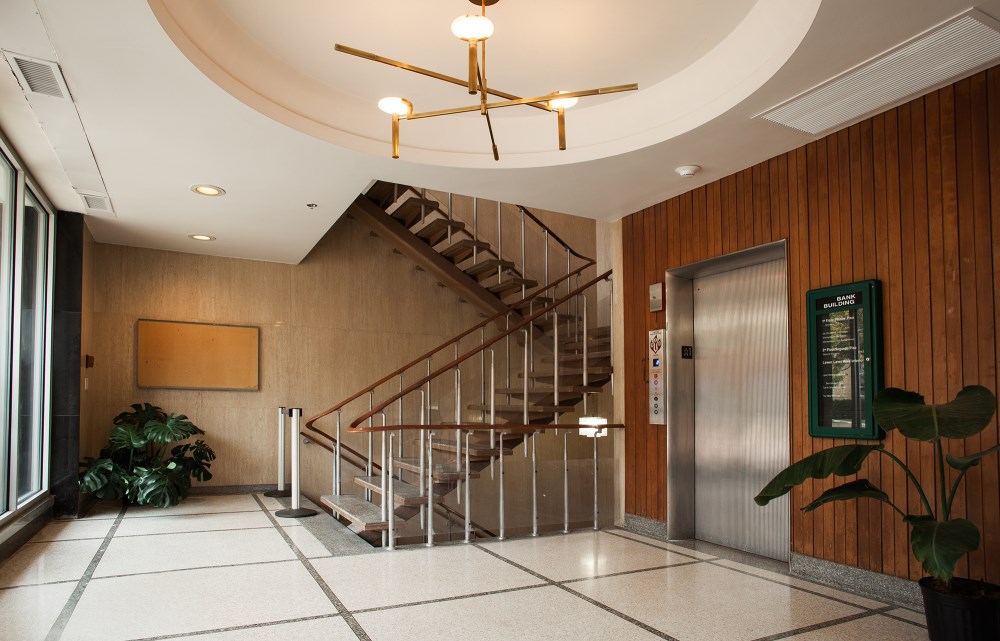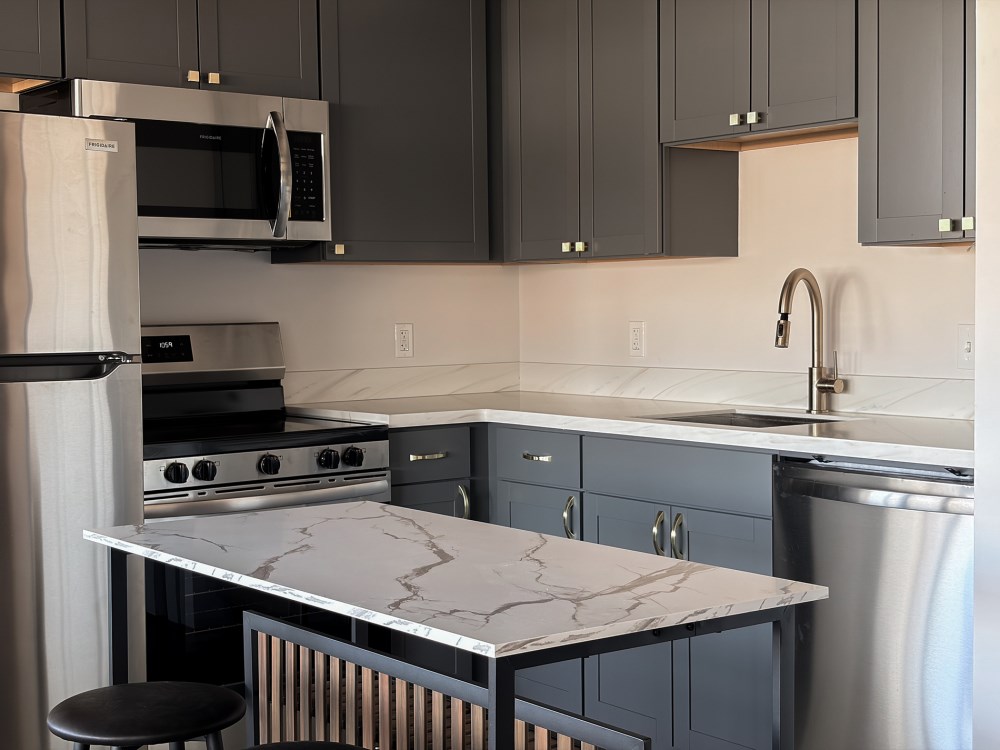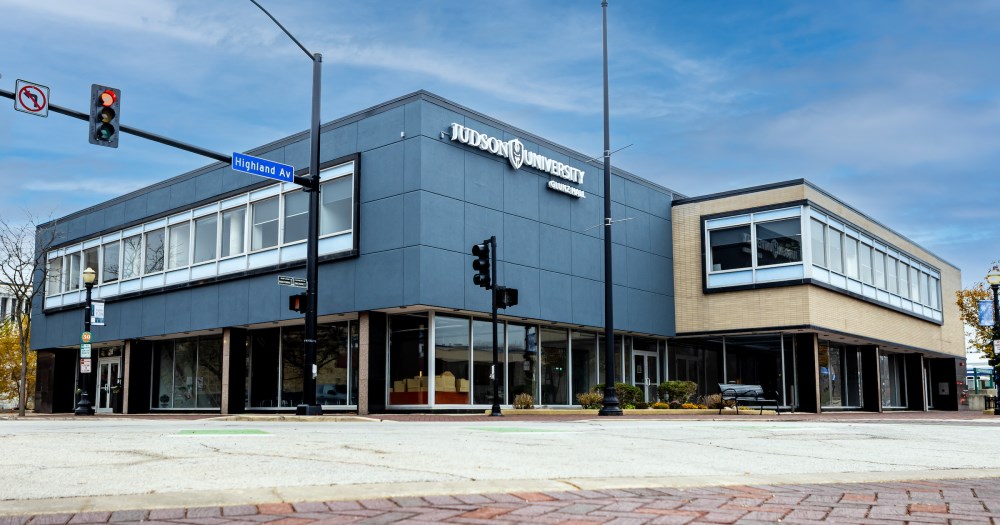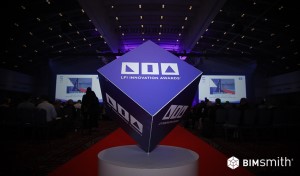In a typical architectural education setting, students may spend years learning about materials without ever truly experiencing them.
They may see material samples, read specifications, and discuss performance in abstract terms. But it is exceedingly difficult to learn in a classroom how those materials behave in real life: how a countertop wears, how sound moves through a wall, or how lighting shifts the mood of a space at dusk.
 Image Credit: Matt Goellner
Image Credit: Matt Goellner
Judson University's Glunz Hall in downtown Elgin, Illinois makes an effort to bring that missing experience to life. Completed in October 2025 through a collaboration between Judson University, Studio Vertex, and Future Architect Fund, the adaptive reuse project transforms a 1960s-era bank headquarters into a live-work residence for approximately 40 graduate architecture students.
Completed with materials from industry-leading building product manufacturers, Glunz Hall has become a "living lab" that makes every finish and fixture an educational experience for architecture students.
Materials as Daily Practice
The thirteen apartments and the ground-floor Glunz Studio for Architecture and Urbanism all include products generously donated by leading building manufacturers.
Students prepare meals on Corian® counters in Calacatta Greige, then wash dishes using Delta fixtures finished in champagne bronze. The same bronze tone carries through to bathroom vanities topped with Corian®'s Domino Terrazzo, where Kräus undermount sinks in white porcelain create clean lines beneath the surface. Behr Paint coatings on the walls prove their durability under the daily wear of residential use, demonstrating how primer selection and topcoat performance translate to real maintenance demands. Meanwhile, Visual Comfort lighting shifts the character of these spaces throughout the day, showing how luminaire scale and finish reshape perception.

Image Credit: Matt Goellner
The educational value extends beyond what students can see and touch. Behind the walls, Homasote acoustic panels absorb sound between collaborative studio areas and private apartments, teaching them how material choices shape quality of life in mixed-use buildings. Beneath the students' feet, FreeAxez raised access flooring maintains the bank's mid-century character while concealing modern infrastructure, illustrating how adaptive reuse balances preservation with contemporary needs. Even the corners and reveals finished with Trim-Tex products become lessons in how detail-level specifications affect long-term durability and the crisp geometry that defines architectural quality.
From Observation to Specification
Typical architecture education treats materials as theoretical choices – options to be compared and evaluated based on data sheets. Glunz Hall introduces an effort to invert this model, beginning with first-hand experience.
Students actually use architect-approved kitchen and bath fixtures daily, observing how ceramic disc valve technology eliminates drips and how magnetic docking keeps pull-down sprayers secure. They experience how acoustic panels rated for high STC performance actually translate to privacy and focus in a dense residential setting. This daily interaction creates a different kind of material literacy.
Students also learn how light defines space by living with carefully scaled fixtures across communal lounges, hallways, and private units. They gain a better understanding of surface durability from watching how solid surface countertops perform under real residential use. The material stays non-porous, resists stains and moisture, requires no sealing or polishing. This makes the products' performance more tangible.
 Image Credit: Ethan Adams
Image Credit: Ethan Adams
At Glunz Hall, the building itself demonstrates adaptive reuse as a sustainable design strategy. The project preserved the bank's mid-century architecture while introducing contemporary finishes and selective Art Deco details. Students witness this balance between preservation and progress in their everyday environment, understanding how new materials can honor existing structure while delivering modern performance standards.
From Theory to Technical Expertise
Many manufacturers involved in the project will continue their relationship with Judson University by hosting workshops at Glunz Hall. This gives students direct access to technical expertise and material science that extends beyond what textbooks provide. They can ask questions about product engineering, installation requirements, performance testing, and specification best practices, learning from the same technical representatives they'll work with as practicing architects.
 Image Credit: Ethan Adams
Image Credit: Ethan Adams
This approach reflects a proposed shift in how the architecture and manufacturing community views education. The project embodies a "for architects, by architects" philosophy, with each material representing an investment in the profession's future. These are meaningful contributions to how the next generation learns to design.
Preparation for Practice
At Glunz Hall, education happens through living. A countertop, a fixture, and a wall finish each become part of a continuous lesson in design performance. The longer students spend in the space, the more they understand what it means to specify with care. They see how materials hold up, how choices shape comfort, and how design decisions ripple through daily life. It is a lasting education that prepares them for practice in a way no textbook can.
--
 BIMsmith is the leading free cloud platform for architects, designers, and building professionals to research, select, and download building product data. Search, discover, compare, and download free Revit families on BIMsmith Market, or build complete, data-rich Revit wall, floor, ceiling, and roof systems faster with the BIMsmith Forge Revit configurator.
BIMsmith is the leading free cloud platform for architects, designers, and building professionals to research, select, and download building product data. Search, discover, compare, and download free Revit families on BIMsmith Market, or build complete, data-rich Revit wall, floor, ceiling, and roof systems faster with the BIMsmith Forge Revit configurator.



 Liz Keizerwaard
Liz Keizerwaard











